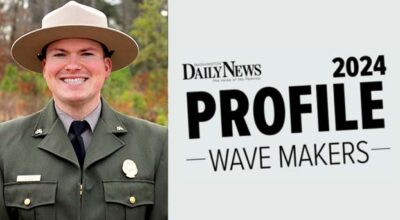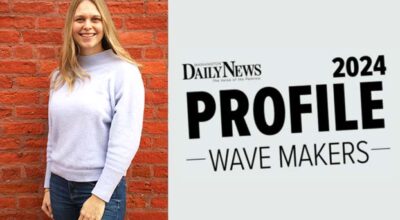Transportation and wildlife agencies strengthen collaboration to create safe passages for wildlife
Published 3:07 pm Monday, May 1, 2023

- (NCDOT Traffic Cam)
|
Getting your Trinity Audio player ready...
|
From North Carolina Wildlife Federation
RALEIGH, NC – The North Carolina Wildlife Resources Commission (NCWRC) and the North Carolina Department of Transportation (NCDOT) recently signed a Memorandum of Understanding (MOU) demonstrating their commitment to work together to improve the infrastructure and safety for both wildlife and the traveling public on North Carolina roads.
North Carolina wildlife is forced to contend with 80,000 miles of state-maintained highways. Roads crisscross the landscape where both large and small terrestrial animals – such as American black bear, white-tailed deer, elk, squirrels, possums, raccoons, turtles and snakes – and aquatic species – such as fish, amphibians, aquatic reptiles and mammals – still attempt to follow ancient wildlife corridors, imperiling both the wildlife and people who navigate them.
The MOU emphasizes improved data collection for this wildlife/vehicle mortality, continued monitoring of wildlife crossing structures, identification of new crossings and wildlife mitigation strategies, and continued collaboration during NCDOT’s project planning processes.
Through the development of wildlife overpasses, underpasses, culverts and fencing along major roadways, the collaboration between NCWRC and NCDOT will provide safe passage for wildlife species across the state.
Additionally, roads are one of the largest causes of habitat fragmentation around the world, carving up large landscapes where wildlife corridors had previously traveled unimpeded for millions of years. Creating safe passages for wildlife directly addresses this issue, and opens the door for future dynamic, wildlife-friendly approaches to state roadway infrastructure.
The North Carolina Wildlife Federation (NCWF) applauds this strengthened collaboration between the NCWRC and NCDOT, and is looking forward to helping in this endeavor to increase wildlife connectivity.
“Protecting wildlife from roadway collisions is critical for infrastructure, the safety of motorists, natural ecosystems, and maintaining a positive image for North Carolina,” said Tim Gestwicki, NCWF CEO and chair of Safe Passage Fund Coalition’s Steering Committee. “As roadway construction creates new barriers to long-established wildlife corridors, inevitably animals are increasingly encountering humans and their vehicles. These encounters result in animal and human injuries and fatalities, as well as increased costs for motorists and insurers, and litter our highways with decaying carcasses. Safe Passage Fund Coalition members encourage, and in fact urge North Carolina to join other states across the country to take proactive steps to reduce these wildlife–vehicle collisions.”
As the safe passage initiative has gained traction over the past few years, 26 wildlife passages have already been created with 11 more currently in the pipeline. But the plan – strengthened by the new Memorandum of Understanding – is for these passages to extend and multiply across the state.
But this is just the beginning. For the first time ever, Congress has made a major investment in wildlife crossings in the recent Bipartisan Infrastructure Law, allocating $350 million for a Wildlife Crossings Pilot Program that will help fund projects in all 50 states. The North Carolina General Assembly is considering allocating resources to wildlife passages that could be leveraged to match the available federal funding within the pilot program.
While the implementation of these safe passages for wildlife will require long-term work from departments of transportation, federal and state governments, and the public, the outcome is only positive for the people of North Carolina and the wildlife with whom we share our state.





